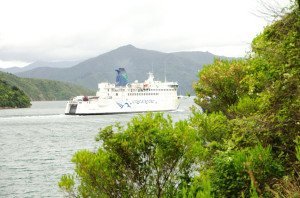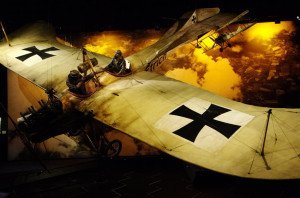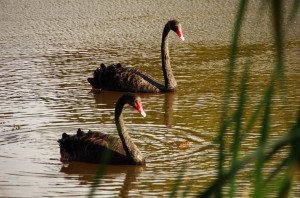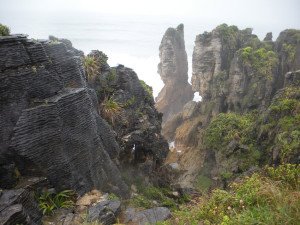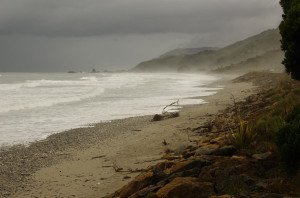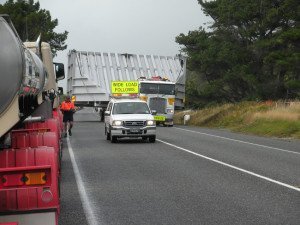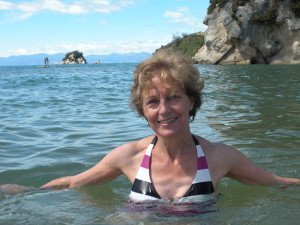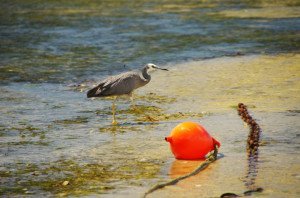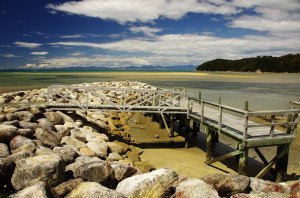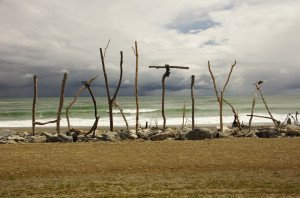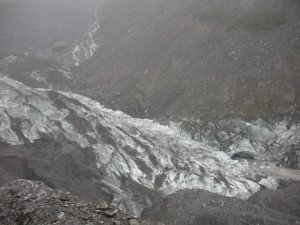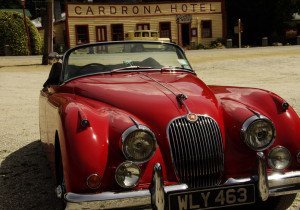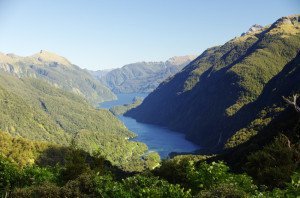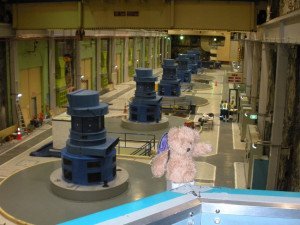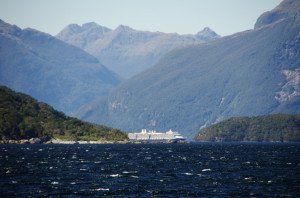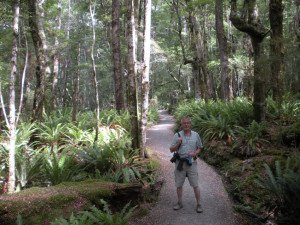The ferry from between the South and North Islands runs from Picton to Wellington and is pretty much like any cross channel ferry, but without the duty free and fewer French. The journey takes around 3 ½ hours and we were fortunate in having a calm, sunny day for our ‘cruise’, so for the first hour or so we sat ‘topsides’ and watched as the ship manoeuvred itself up the narrow Queen Charlotte Sound and even narrower Tory Chanel and out into the Cook Strait. The route passes dozens of isolated houses and tiny communities which appear to be completely inaccessible other than by boat; although some were obviously holiday retreats the majority were clearly homes – presumably if you live somewhere as inaccessible as that you really don’t want your neighbour to pop round for a chat or calling in to borrow a cup of sugar.
Our arrival in Wellington coincided with rush hour and a traffic jam, but once we were out of the city we had an easy journey up to the freedom campsite we’d chosen on the west coast at Mana which is about half an hour out of the city. Whether by discerning selection or sheer good fortune we once again stumbled on a nice quiet site with great views, (fairly) clean toilets and, as luck would have it, within five minutes walk of the railway station which we used the following day to pop back into Wellington for some sightseeing. The campsite was also on the edge of a large and very well organised recreational area which was evidently the focus for just about any sport and outdoor activity you care to name – everything from dog obedience classes and Sea Scouts to kayaking and cricket. All part of the New Zealand lifestyle thing and very impressive.
